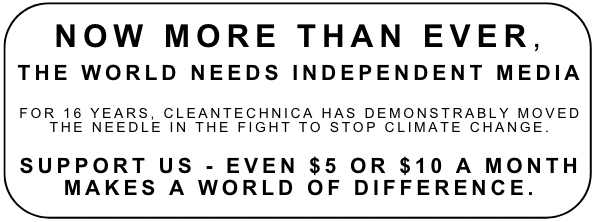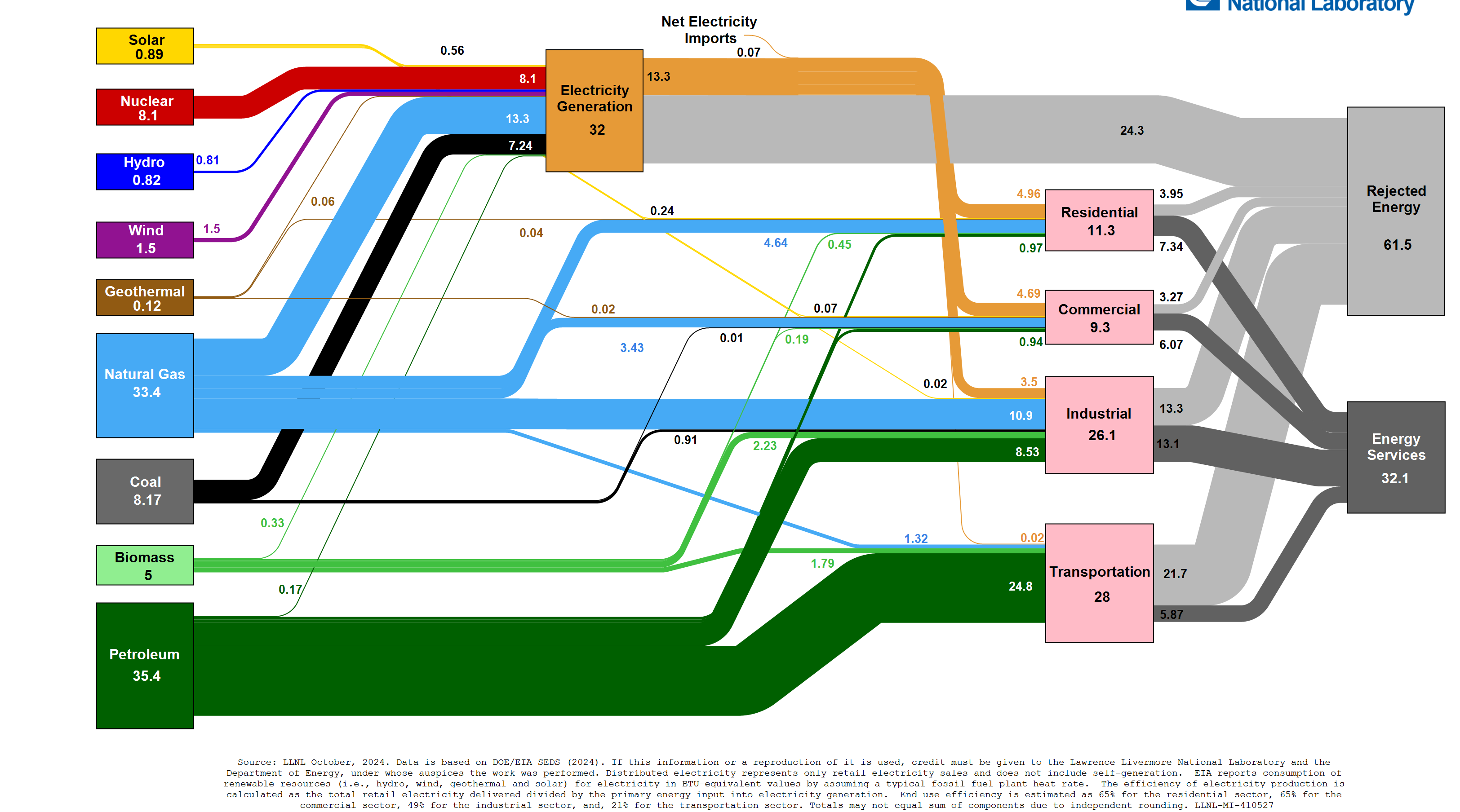
Sign up for daily news updates from CleanTechnica on email. Or follow us on Google News!
Everyone has some idea of how much energy an ICE vehicle uses. After all, if you’re putting fuel in and then seeing how much you can drive before it needs fuel again, you know that you’re pumping a certain amount in. Add in the knowledge of other things a gallon of gas can do, and the amount of chemical energy that you are pumping at the gas station is something that everyone has at least some vague idea of.
At the macro level, everyone knows about things like hearing about how many millions or billions of barrels of oil (or its equivalent) it takes to power the economy, power a town, or produce the fuel everyone picks up at the pump.
Where this knowledge falls short is when the discussion of more efficient technologies comes in. People know that it takes a lot of oil, methane, or propane to get things done. So, when someone proposes that we replace the oil or methane with solar energy or even energy from the existing grid that uses a lot of fossil fuel, people assume that it’s going to take just as much of that energy to move a car a mile, heat a home, or otherwise do things we need done every day.
How do we know that people are thinking this way? Because the say things like, “If all cars were electric, the grid would COLLAPSE!” or “Solar panels could NEVER power a car.” They don’t know all of the particulars of the amount of energy that a car uses, but they know that it’s a LOT, so they then assume that the existing power grid simply can’t handle all that. It’s not accurate, but it’s intuitive and seems natural, so people go with it.
A recent Medium post by Jan Rosenow gives this mental mistake a name: the primary energy fallacy.
In short, people simply don’t understand how much energy just gets wasted when burning fossil fuels. Overall, an ICE car uses between 60% and 80% of the fuel’s energy to produce waste heat. We don’t notice it because the car is designed to handle all of that waste heat and safely dispose of it via the radiator, the exhaust pipe, and the gaps in the wheels (brake heat).
Power plants are better, achieving somewhere between 40% and 60% efficiency, only putting off 40–60% waste heat. Why? Because the multi-million dollar engines at power plants are just far better than the relatively cheap piston engine under the hood of a car. This makes EVs a lot cleaner, even when powered by a grid that uses fossil fuels. But, because people don’t know that power plants are better, they assume that their car is just as good at turning chemical energy into kinetic energy and electricity.
Overall, all of the waste in power plants, car and truck engines, furnaces, industrial machines, and everything else adds up to almost ⅔ of the chemical energy that was there to possibly be had. But, if you think that fossil fuels are an efficient technology, or that they’re efficient enough, then you won’t know that there’s anything better to be had.
Why This Fallacy Matters
It’s totally normal for most people to have no idea what makes things tick. Most people know how to use a computer, but they don’t have any clue how it works, how it’s built, or even how to deal with relatively minor problems that can come up with it. Most people know how to drive, but they have no idea how a combustion engine works, what an alternator is, or why it sometimes drips oil on the driveway.
Not knowing how things work at a deeper level is OK because there’s always someone you can turn to who can help you figure it out. Computer technicians, mechanics, plumbers, electricians, and doctors help people figure things out that they can’t figure out for themselves. When we have good people in all of those roles, society can work even when most people are oblivious to what’s going on around them under the surface.
Where we start to have problems is when politics gets involved in energy. It’s impossible to keep politics completely out of it, but when elected officials make a habit of picking the winners and the losers, people who aren’t experts in energy start making decisions. Smarter elected officials will at least consult experts, asking them to give advice on how to do what’s actually in the best interest of their constituencies. Dumber elected officials will instead do what it takes to do favors for their donors, and will use the population’s lack of understanding against them for personal gain (monetary and political).
The primary energy fallacy makes it easy for politicians funded by fossil fuel interests to accomplish this hoodwink. Simple things like “the grid can’t handle EVs” and “you can’t replace fossil fuels because we use so much energy” are easy to believe when you don’t understand just how thermally inefficient ICE technology is.
Solving The Problem
This is the toughest part. When something seems so normal to people, it’s tough to explain that things aren’t what they seem. Instead of looking like the smart and helpful person who’s trying to keep people from making mistakes, you end up looking like the heretic or con artist, or worse, someone with an agenda.
Overcoming that won’t be easy, because it’s a matter of getting the truth out there more than the lies. In a world where fossil fuel interests, their bought-and-paid-for politicians, foreign governments, and anyone else with an interest in seeing the United States not change anything, it’s hard to get ahold of the megaphone. Phony media, legitimate media that obeys in advance, lying politicians using the bully pulpit, bot armies on social media, and many other things flood the zone with nonsense that seems credible despite being completely untrue.
It’s up to each and every one of us to speak out and share the truth as often as possible. Don’t be afraid to share just because it might upset people.
Featured image by Lawrence Livermore National Laboratories (Public Domain).

Chip in a few dollars a month to help support independent cleantech coverage that helps to accelerate the cleantech revolution!
Have a tip for CleanTechnica? Want to advertise? Want to suggest a guest for our CleanTech Talk podcast? Contact us here.
Sign up for our daily newsletter for 15 new cleantech stories a day. Or sign up for our weekly one if daily is too frequent.
CleanTechnica uses affiliate links. See our policy here.
CleanTechnica’s Comment Policy



